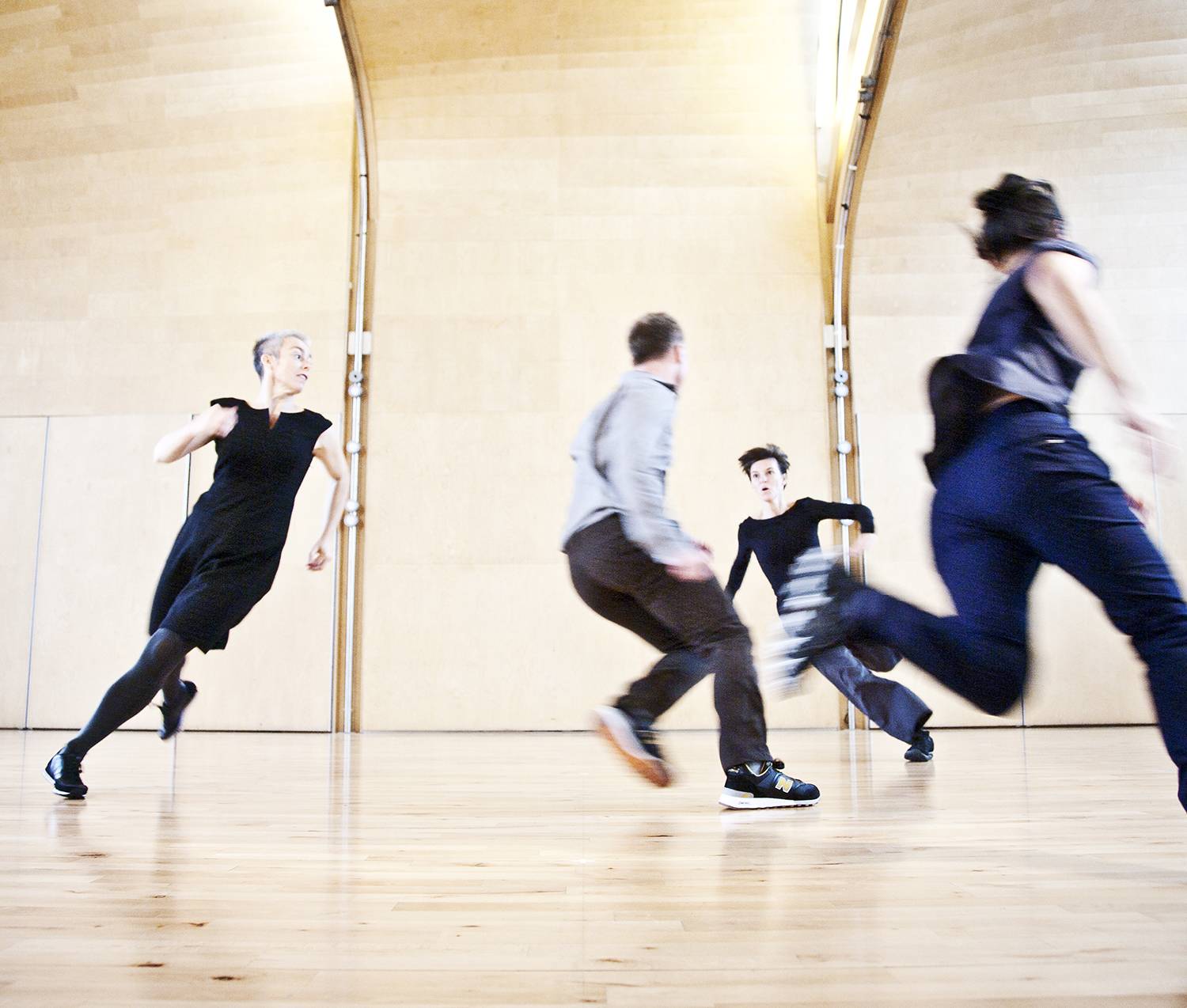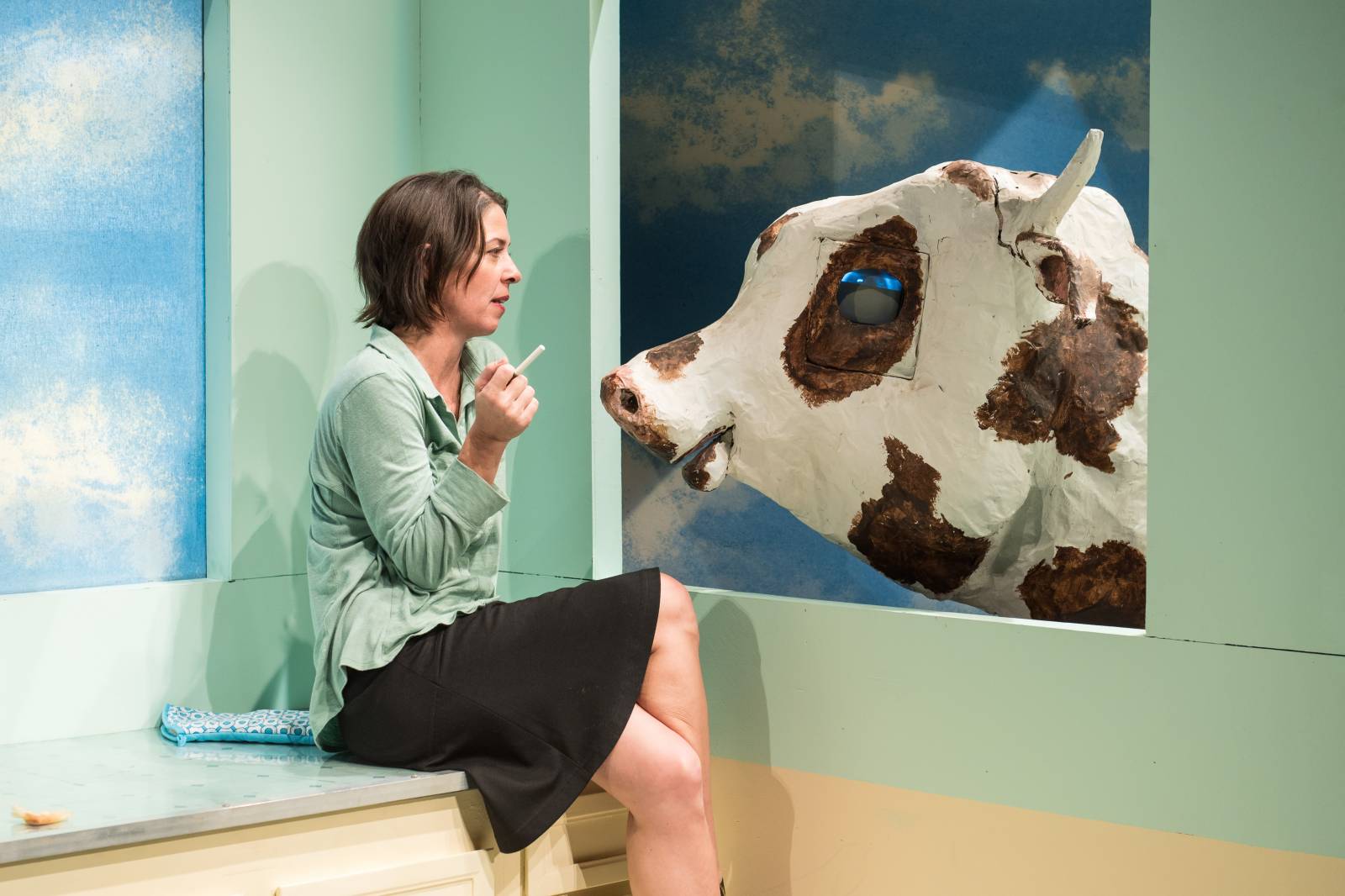Siobhan Davies
Siobhan Davies, a dancer and choreographer originally trained in visual art, established Siobhan Davies Dance Company in 1988.
I began dancing and making dances at much the same time.
The exploration of how to ask my body to move was, in different ways, the subject of the dances that I made. I was a member of a touring dance company, London Contemporary Dance Theatre, and our destinations were the stages on our tours. Most were proscenium arch theaters and thus already demanded a certain compositional approach. The audience faces the work; the proscenium is the gate to the space that holds the scenery and also to where the action takes place.
The stuff I loved to grapple with first was how I could use the volume of the spaces we were dancing in. I had an immediate response to these vast cubic areas of air that I felt we could push and pull and shove with our dancerly energy and patterns of behavior. Instead of thinking of the space as empty, I thought of it as molecular and thick with presence. We could treat it as positive space, a place that could hold memory or trigger reactions. We seemed to be able to change its proportions and texture by how we altered our attention to it.
As I began to work with both my body and other dancers’ bodies as material, I remembered how I had lived with paintings in my childhood and how intently I had looked at the works of Graham Sutherland, John Piper, and Ivon Hitchens in my parents’ collection of post–World War II British art. I was absorbed by how an artist’s imagination and hand could turn simple materials into an image that made beautiful sense to me while still remaining paint on a canvas. Each of these artists had imagined and brought into being something distinct by organizing different marks, colors, and textures.
But my route to choreography was also to try to understand who each performer was and how their different histories might give them a particular response to what I was asking of them. I began by working on myself and came across the tangle of my own experiences, illusions, and fears, which betrayed me as I made work. Initially that was a painful process, but over time and as I worked with others, our personal histories and the excavation of performed movement became the complex material for our choreography.
I had increasingly become frustrated that I could not see this complexity on a stage. I felt that we were making a form of cinema when working for traditional venues. But in the studio I could experience the bare and beautiful studies that each artist had crafted. Our bodies are physical libraries of lived and learned experience. I was drawn to collaborate with those artists who want to explore that knowledge as material for making work. These people became the most potent reason for my wanting to choreograph.
In this process my interest shifted from thinking about composition as an arrangement of physical actions in space into a richer territory where the knowledge, behavior, histories, and personal traits of each performer also had to be an organizing and visible principle for composition.
A work that tested out this approach is A Series of Appointments (2010), created by four dance artists and myself. I used a very simple device as a trigger. In early rehearsals the four performers were asked to form the radius of a circle, and keeping that line straight, they were to rotate for as long as they could. Initially they circled for nearly an hour and spoke of their experience while walking. The longer they walked, the more detailed their experience became. As they circled, they described their own difficulties and learned to understand what the others had to do. We were introducing instability as one of the ingredients of composition.
What initially began as a small community trying to help one another maintain the line gradually fractured into unique pathways made by independent-minded individuals. We then added complexity by integrating spatial renderings of patterns of rope knots into the movement sequences. Each pattern created detailed spatial formations while staying within the original circle, using a constant center point and returning to the radius as a kind of home key.
The patterns changed constantly. If one person deviated, all the performers lost the necessary coordinates to help steer the next action. The compositional structure of the work became compulsive and chaotic in equal terms. The complexity of the structure drew the performers to the edge, experiencing how the composition could fall apart and how they might save it. The whole work could survive only if everyone allowed both exactness and flexibility into the execution of the compositional principles.
Every second was made distinct by each individual in relationship to the others. Each artist had a unique way of solving the problems as they came up, and their strategies had been honed by past experiences. We came face-to-face with how we work and with what we do. Instead of covering that up, we enjoyed the exposure and the constant threat of destabilization. Our audiences could clearly see what we were attempting and became involved in the process. They were delighted to witness the being kept alive by the artists as they added pattern upon pattern. As witnesses, they were also amused and supportive when occasional failures inevitably took place.
When the work came to an end, the room seemed to carry on swirling. We had created a wild air in the space with our tightly constructed whirlwind. A Series of Appointments helped us engage with the tension of how to hold a tight compositional form, even if the acute and necessary presence of liveness might destabilize our foundations at any moment.
For Further Reference
Kevin Volans, White Man Sleeps, 1982.
Bronislava Nijinska, choreography for Les Noces, 1923. Music by Igor Stravinsky. Premiered June 13, 1923, with Sergei Diaghilev’s Ballets Russes, Theatre Gaite-Lyrique, Paris.
Complex geometric textiles woven and ornamented by the Shoowa people in the former Kuba kingdom, located in the present-day Republic of the Congo.
Deborah Hay, The Match, 2004.
Italo Calvino, If on a Winter’s Night a Traveler (New York: Harcourt, 1981)
Caryl Churchill, Blue Heart (comprising two one-act plays, Blue Kettle and Heart’s Desire), 1997.


















































































